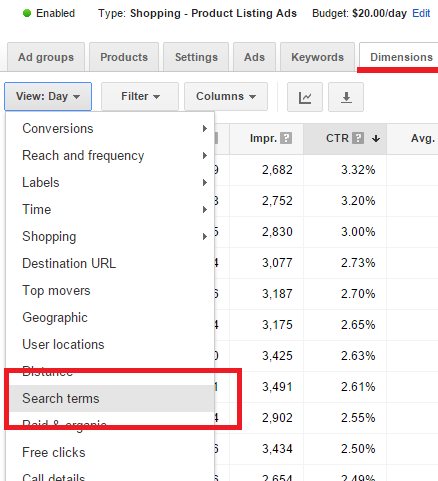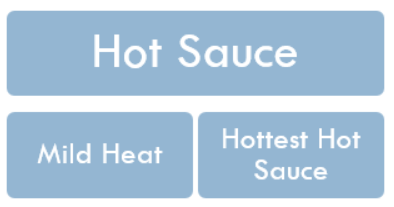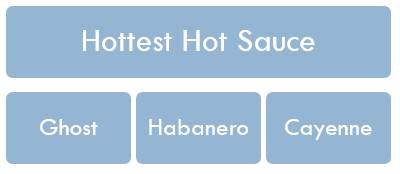
There's more than one way to get on the first page of search results, and that means having more than one strategy for making the most of page 1 real estate. Join two of our top specialists as they explain ways to create an integrated SEO and Google Shopping Feeds campaign.
Sometimes the sum of the parts is really greater than the whole. Sherlock is a world-class detective, but Watson elevates him even further. Laurel and Hardy were great comedians by themselves, but it was when they worked together that we laughed the most. If you're planning on establish yourself on search engine result pages, the marketing duo of SEO and Shopping Feeds is your way to go. Though fantastic on their own, their overlapping benefits and unique differences allow your business the best chance SERP success.
We'll discuss the similarities and differences of these marketing approaches and how they can form a symbiotic relationship by connecting Google crawlability with customer experience.
Google accesses information differently between Feeds and SEO. Like the nutritional information on the back of a bottle, shopping feeds are built off the quantifiable data of a product. The size, price point, weight and product title are key factors and submitted directly to Google. SEO on the other hand uses on-page content and meta information to signal relevancy and quality to search engines, which in turn reward your pages with higher results on a SERP. Google will routinely crawl your site and look for keywords and content which it deems helpful in answering future search queries.
In order to help Google help your site, you can optimize your products and site architecture in ways that aid both the data-driven shopping feeds and the customer-focused content of your SEO efforts.
Keyword research informs category architecture
The process of conducting keyword research is the first step in developing a comprehensive SEO strategy. We need to know what the data is telling us before we begin to implement site structures and content which may not fit our target audience. Keyword research, as you may already know, describes to the process of selecting terms (keywords) that accurately describe the products on a particular page.Because every online store operates in their own industry and sells to different customers, an effective keyword research process will confirm a site’s category hierarchy is sound or may uncover a different way of categorizing a set of similar products. Online tools like the Google AdWords’ Keyword Planner present the estimated search volume for your keyword list. Keywords with the most search volume will often be top-level categories, while 3 and 4 word phrases may present opportunities to create sub-categories (landing pages) to build authority for those terms.
A great location to find these 3 or 4 word phrases is in your AdWords interface under your Google Shopping campaign’s dimension tab. Though product listing ads do not use keywords to target your audience, this campaign type still captures the search queries used by searches to trigger your ads.You may find under that the broadest level searches generate the most clicks and impressions, but the long tailed phrases have a higher click through rate (CTR) and conversion rate.
Once we’ve comprised a list of keywords which are relevant to our business goals, we can turn our attention to site structure. The importance of a clean design and easy UX cannot be understated. Organizing products with proper categories permits visitors to quickly and easily locate what they are looking for and allows you to focus on different keyword themes on each category or sub-category landing page. This category framework lets the search engine to bring in targeted, highly-relevant traffic to pages that are using longer-tail keyword phrases, which are shown to convert to sales at a higher rate than broad terms.
We’ll use a fictitious hot and BBQ sauce store to drive home the importance of thoughtful category architecture. At its broadest level of categorization, each of the items in the store can be classified as being either a “hot sauce” or a “BBQ Sauce" These are the broad, top-level keywords that have high monthly searches. We recommend researching and creating sub-categories for products which are more specific. While subcategorizing your products seems obvious, try to think about what the subcategorization is actually doing for your site. Questions to ask yourself when grouping specific products together for subcategories can include:
- What they are?
- How they work?
- What they do?
- Who uses them?
- What issues they solve?

If you’re having trouble figuring how to break down the Hot Sauces look to the Keyword Planner or your shopping feeds data. A quick search tells us that there have been 27,000+ searches for terms including hot sauce within a particular month. As “hot sauce” is a competitive term to rank for, think about what other ways a customer could describe it--short phrases that better define your products and are more specific. We looked at the following keywords and their search volumes will guide what sub-category needs to be created next.
| hottest hot sauce | 5,000 monthly searches |
| hot wing sauce | 2,900 monthly searches |
| habanero hot sauce | 880 monthly searches |
| gourmet hot sauce | 150 monthly searches |
Consider assigning products to multiple categories as visitors may look for the same product in different ways (Brand vs. Product Use). A thoughtful category hierarchy will help Google better understand a product, and therefore its industry.The product landing page is the smallest piece of an SEO-minded site structure. This page will focus on the tangible information of the product itself and be the end of the long-tail keyword funnel. Unlike PPC text ads or organic results, shopping feeds lead only to product pages, and therefore it will be important to optimize the pages for that experience. Because consumers bypass on site navigation and structure, the product pages should be focused and concise. Let's investigate why. When a customer visits your site organically, they are able to move through the site's categories and subcategories based on their search perimeters, filtering results as they go along. With data feeds Google is showing its best guess of the correct landing page.
With this in mind, it is important to make data-driven choices when optimizing product titles. As mentioned earlier, product listing ads do not use keywords to trigger ads. Instead, the product title that is most relevant to a search query will appear. The more informative the title is the likelier a consumer will click your ad as it has greater applicability to their search. Size, color, and brand information should be included into a title when applicable to give a better sense of the product. The same synonyms and long tail phrases from our keyword research list can be included to cast a wider net when showing our ads.
Still considering hot sauces, product title optimization is of particular importance with a competitive market. More often than not hot sauces have a similar price point and bottle size. It is then relevant to explain the flavor, spice, and heat of the product to stand out from the competition. A product listing ad can be your first customer touch point with a new audience, so the more informative and explanatory the better.Thoughtful keyword research and category architecture will help the search engines crawl your site, as well as allow for your customers to have an enjoyable shopping experience.
On-page content
Once you’ve confirmed the best keywords are being used to categorize and name your products there is one final step that must be addressed: the creation of on page content. For an ecommerce site, this usually means writing unique and useful category and product descriptions. When a shopper clicks on a feed or organic link from the SERP, you’ve completed goal #1, getting them on your site; however, you are not going to pay the bills on clicks and visits alone. The main goal is a conversion, so the website needs to include text that is relevant to that customer and product.To stand apart from other sites, each category and product page needs to make a case for why the customer should spend money on your site. Creating content that is relevant to the page and customer will take some time and effort to craft, but strong on-page content will be able to:
- Educate and empower customers seeking answers
- Build trust in your company brand
- Recognize target market’s concern, errors, and questions to serve them effectively
- Differentiate your company from competition
The data capabilities that shopping feeds provide have beneficial customer experience effects as well. Data feeds have many required fields, from unique identifier (MPN, GTIN, etc) to brand to shipping weight. Including this information onto the on page content helps lower any red flags in your customer's eyes.
When crafting new, unique content, think back to how you’ve subdivided categories:If this information has the chance to remove any pain points about technical specifications or brand capabilities at the same, time then all the better.
- What is it?
- How does it work?
- What does it do?
- Who uses them?
- What issues they solve?
For more advice on optimizing your site for conversions, from high-level category pages to pinpoint landing pages, be sure to read our free Ultimate Field Guide to Ecommerce Conversions.
-Dan Smullen, SEO Team Lead, and Sean O'Connor, Search Marketing Specialist














